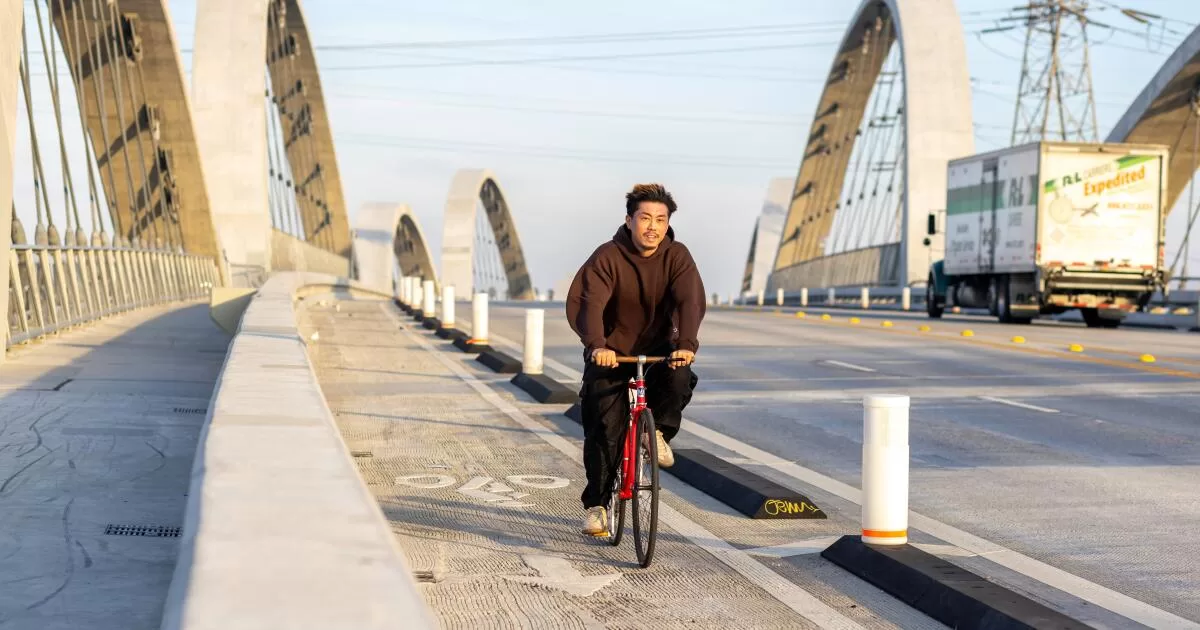Curbing pollution from passenger vehicles won’t be easy. And if the state invests in the wrong infrastructure, those goals could become impossible. Gov. Gavin Newsom’s budget proposal would be a big swerve in the wrong direction.
The state is facing a huge budget shortfall and needs to close a deficit of about $45 billion. The governor proposed to do that through broad cuts and reallocations, including shifting about $600 million from the Active Transportation Program, which encourages biking and walking, toward future highway programs instead.
Why would we cut from the state’s most climate-friendly transportation program and spend that money on highway projects that will make climate change and traffic congestion worse?
The state government spends about $33 billion a year on transportation, more than ever before. More than half of that, $18 billion, goes to the California Department of Transportation, which is spending billions of dollars to widen highways — a short-term strategy that we know from experience will only exacerbate traffic congestion and increase greenhouse gas emissions. Despite this, according to a recent Natural Resources Defense Council study, most transportation spending in the state still goes toward projects that increase greenhouse gas emissions, especially widening highways.
In addition to routinely approving new highway widenings, the California Transportation Commission also runs the state’s most climate-friendly transportation initiative, the Active Transportation Program. It funds things like bike lanes and pedestrian safety improvements. A report from the program last year said it “remains oversubscribed and grows increasingly competitive each cycle.” In other words, cities are desperate for resources to make their streets safer and more suited to biking and walking — helping people leave their car at home for some trips — but local alternatives to driving increasingly have to compete with each other for resources from the state.
These climate-friendly, lifesaving, politically popular projects shouldn’t have to scramble for scraps of the transportation budget.
We will not be able to achieve our climate goals solely by shifting gas powered vehicles to electric vehicles; we also must transition a significant number of daily trips in our cities to mass transit, biking or walking — precisely what the Active Transportation Program helps make possible. We also must do this to build safer streets. In Los Angeles, a pedestrian is injured every five hours and killed every two days, one of the highest rates in the nation.
Instead, we continue to fund highway expansion unabated. In February, the Transportation Commission approved hundreds of millions of dollars to expand the 15 Freeway, over the objection of some commissioners. This month, the commission approved the controversial expansion of Interstate 80 between Davis and Sacramento, which will also cost hundreds of millions of dollars — equivalent to all funded active transportation projects in 2023. Why would we pump more money into projects that work against our climate goals?
The Senate Committee on Budget and Fiscal Review, under climate champion and Chair Sen. Scott Wiener, would most likely be amenable to rejecting the proposed cuts to active transportation. If so, it’s critical that L.A.-area Assemblymember Jesse Gabriel, who chairs the Assembly Committee on Budget, gets on board as well. It would take both the Senate and the Assembly to override the governor’s proposal.
Earlier this month, the same week Newsom visited the Vatican, Pope Francis said: “Climate change at this moment is a road to death.” In California, we seem hell-bent on making sure that that road has as much car capacity as possible before we hit the climate change wall.
Michael Schneider is the founder of Streets for All.
